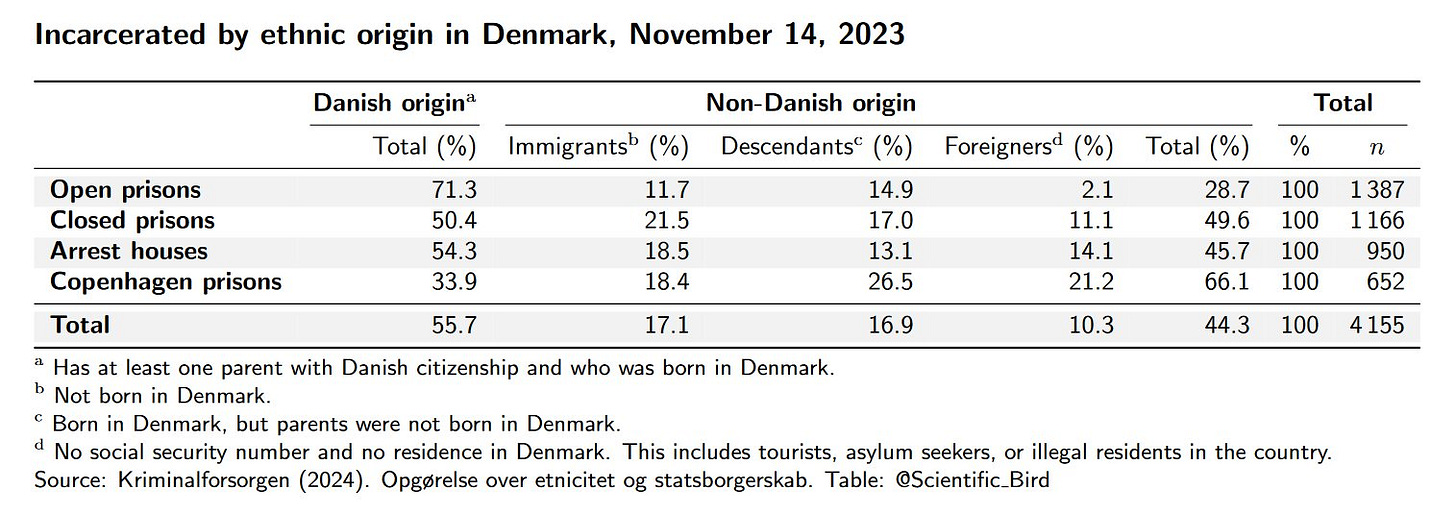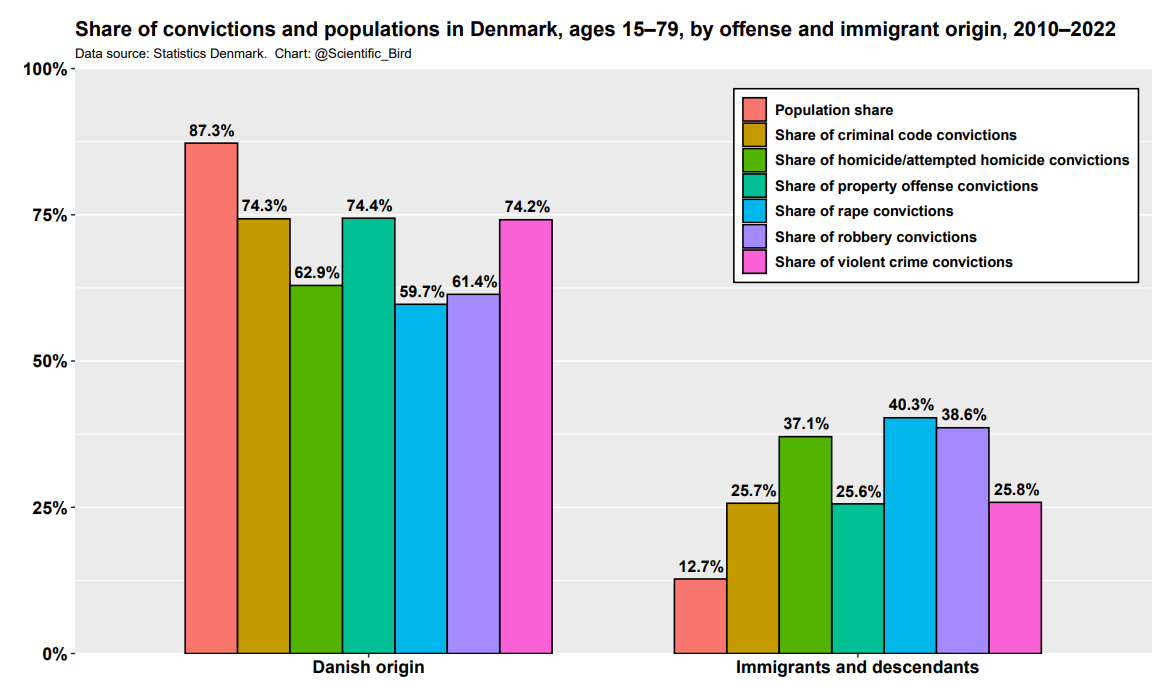Immigration and crime: Denmark
Are immigrants overrepresented in crime? If so, which immigrants? And why?
This is the first post in a new series in which I will summarize relevant statistics regarding immigration and crime in a given country. The first part in the series will cover Denmark. I have already reviewed a lot of the relevant statistics, but more ground will be covered here. My initial plan is to cover the Nordic countries at least1, though I may decide to expand the series further.
See also:
Broad overview
Immigrants in Denmark are overrepresented in criminal convictions. That is, their share of national convictions exceed their population share. In 2022, of 17,240 convictions under the penal code among 15–79-year-olds, 29.7% (5,120) of the convicted were immigrants or descendants (Table 6.1, Statistics Denmark, 2023). In the same year, 15.2% of the population (age 15–79) were immigrant or descendant. This implies that immigrants and descendants together have about 2.4 times as high conviction rate as natives.
The figure below illustrates conviction shares by offense type in the years 2010 to 2022. Immigrants and descendants together are overrepresented in all offense types, but, of the analyzed offense categories, the overrepresentation is greatest for homicide/attempted homicide, robbery and rape.
Non-natives are also overrepresented in Danish prisons. A recent analysis showed that 50.4% of those in closed prisons had Danish origin, and just 33.9% in Copenhagen prisons. For context, in 2023Q3, people of Danish origin represented 84% of the national population and 72% of the Copenhagen population.

In the next sections, we will analyze the differences between immigrant groups in greater detail, and look at the possible causes of the differences.
Immigrant heterogeneity
Keep reading with a 7-day free trial
Subscribe to Patterns in Humanity to keep reading this post and get 7 days of free access to the full post archives.


